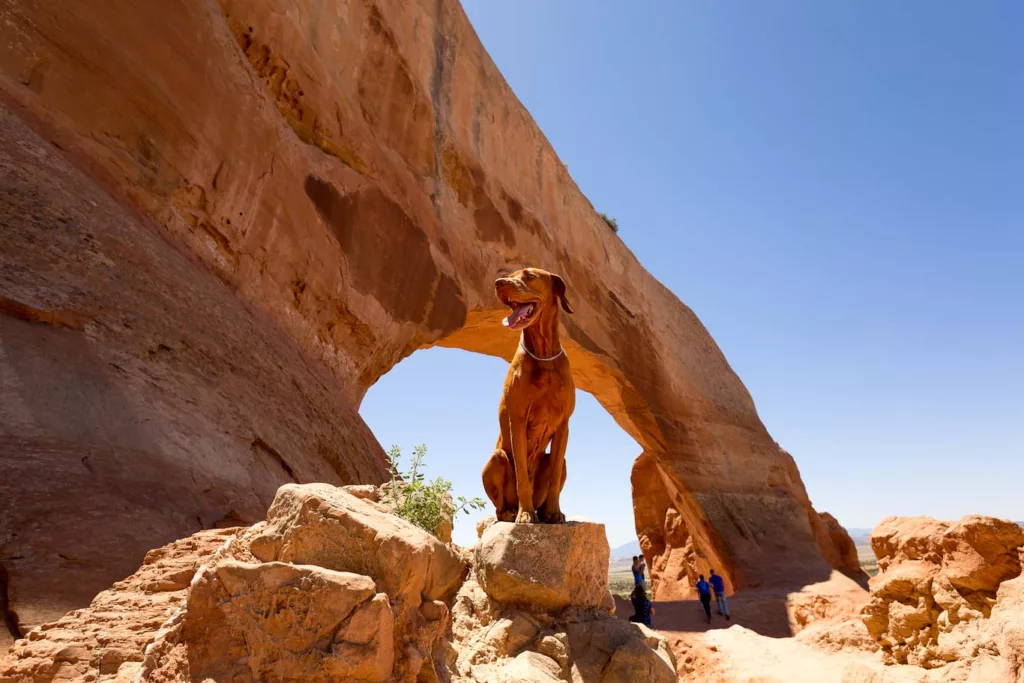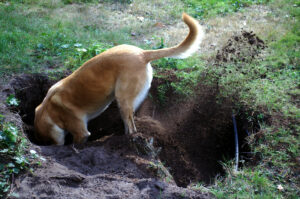What is the best dog house for each climate type? The choices can be a little daunting when deciding which dog house to buy. And big-box stores may or may not want to guide you in a particular purchasing direction. So, how do you determine which dog house is best?
See which dog house is the best for your climate.
Well, first, you need to have a dog house. If you don’t have one, you can start by choosing suitable materials for your dog house and then adjusting or renovating it to suit the climate. And you need to know the basics of doggy homes. Remember, if it rains a lot where you live, it will need to be waterproofed in one way or another. If you don’t have a doggy home, watch this video about building your own for cheap.
You can see the dog house plans here.
Dog House Climate Considerations
There are several things to consider when looking at a dog house for your dog. I’ve reviewed a bunch of readily available dog houses and can tell you most of them are pretty crappy.
Some would tell you that a plastic dog house is an excellent idea because it will last for centuries. The truth is that most dogs, that is, most dog breeds, do not live past 25 years. Many breeds of dogs only live 10-15 years. So, why have a crate that will outlive not only your dog but you as well? And we know how harmful plastic is to the environment.
With that in mind, I’m not going to throw a bunch of affiliate links for plastic dog houses at you. Not without some serious consideration of its feasibility. I have no interest in duping you, the clever reader, into buying something I wouldn’t buy myself. And without further ado, let’s dive into which dog houses are best and for which climate they are best.
Climates
Since many areas have multiple climates, sometimes a dog house must be suited for multiple conditions. One of the benefits of where I live is that we have tropically hot, beautiful summers, but we also have frigid-cold, freezing winters. And we get a lot of rain, snow, ice storms, and wind. Our buildings must withstand near arctic-like freezing winters, blisteringly hot summers, and everything in between.
I’ve reviewed some of the primary climatic regions, and here is a summary of how it’s broken down for temperature regions and zones.
Climate Zones
Climate Type – Arctic/Polar

- 0 and below (Celsius)
- 32 and below (Fahrenheit)
- Precipitation – Snow, Ice, Freezing Rain
- Hazards – Freezing, Frostbite, Death (for the wrong breed for the climate)
A good old Canadian winter. Or Russian. Or anywhere that gets snow and bitter cold for any length of time. This would include multiple countries across the globe, no disrespect if I haven’t mentioned yours specifically.
The point is that a nasty cold winter counts as an Arctic or Polar zone when we are talking about our pooches. And if you have a dog breed that can handle such a climate, having an insulated dog house or, better yet, a heated one is a nice gesture towards keeping your dogs healthy and maybe even alive.
Where I live, most of us keep the dog indoors in the wintertime due to the extreme winter weather. Some breeds, though, are well suited to the cold, such as Huskies. These breeds have no problem tolerating a bit of zero-degree weather and even take temperatures well below that for periods of time.

Recommendations
The dog house for these conditions needs to be waterproof and well insulated. I also recommend having a dog house heater to maintain a pleasant temperature inside.
Dog House Door
The door is an excellent addition to a dog house for a cold climate or season. Look at my article on dog house doors for more information on types, but my favorite now is a double-strip curtain. Even better if you line the inside with strips of cotton. Some dogs may need a bit of coaxing with a treat to learn to push their way through, but once they figure it out and do it a few times, it will be no problem.
Climate Type – Temperate – Cool

- 0-10 degrees Celsius
- 32-50 degrees Fahrenheit
- Precipitation – Rain
- Hazards – Mold, Damp Conditions
Nearly all dog breeds will survive in a temperate, cool environment. Some species, such as hairless breeds or breeds that come from tropical to extreme heat regions may suffer in this zone if they are kept at the lower end of the temperature range for extended periods. Dogs not getting a winter coat may feel discomfort in this temperature zone.
A few creatures tend to live in this climate that you must try to keep your dog away from. One in particular that comes to mind is our stinky friend, the skunk. They may look sweet, but they spray a horrid-smelling scent that will stick to your dog for months. They can also carry rabies, so best to make sure you do a bit of prevention, like keep your garbage locked up and don’t leave extra dog food out at night unless your dog is attending it. And if you have a small dog, don’t leave it unattended.
Dog House Recommendations
A dog house should be made to retain heat and fight against molds and moisture build-up by having ventilation or even a dehumidifier (on a luxury model). Rain is often an issue in this zone, so the dog house roof should be suited according to the typical conditions where you live. I recommend elevating your dog house slightly, so there is an air gap between the dog house and the ground. You could make a concrete dog house foundation and use two pieces of wood acting like railroad ties to hold the dog house off the concrete.
Insulation should be present but does not need to be much. Depending on what the dog house is made of, the construction itself may provide enough insulation for this temperature region.
Climate Type – Temperate – Warm

- 10-25 degrees Celsius
- 50-77 degrees Fahrenheit
- Precipitation – Rain, Thunderstorms
- Hazards – Mold, Damp Conditions
The ideal temperature for most dog breeds is in the temperate/warm range. This range is cool to room temperature. As most dog breeds have fur, this is the ideal range for most breeds.
Dog House Recommendations
A dog house suited for this climate temperate range will focus more on fending off elements such as wind and rain. Insulation is not required in this temperature range. Open-concept dog houses with removable panels are an excellent idea for warmer days.
Climate Type – Tropical

- 25-40 degrees Celsius
- 77-104 degrees Fahrenheit
- Precipitation – Rain, Thunderstorms
- Hazards – Mold, Damp Conditions, Humid/Hot Conditions
Most dogs will do fine in these temperatures, except those with thick coats suited to cold conditions. You must keep an eye on dogs like that in these warm regions and ensure they get enough water and shade to stay cool.
Dogs with thin coats will love these temperatures, but keeping them hydrated is essential. Also, give your dog a place to rest in the shade, like a dog house. That’s another reason why a dog house is an excellent care strategy.

Dog House Recommendations
Dog houses for this temperature region do not need to have much, if any, insulation. The key is air circulation, shade, and protection from the sun, wind, and rain. You can use the sun to your advantage by setting up a solar-powered fan.
Climate Type – Extreme Heat

- 41+ degrees Celsius
- 105+ degrees Fahrenheit
- Precipitation – If you’re lucky.
- Hazards – Extreme heat brings extreme weather, heat stress, dehydration, heatstroke, and possible death, depending on how hot it gets.
These sorts of temperatures make people feel uncomfortably hot. And at around 50 degrees Celsius, people tend to start dying off, so let’s not go there. Assuming you are dealing with the low to mid-40s (Celsius), you want to do your best to keep things cool.
Dog House Recommendations
Shade, breeze, and cool is the goal of any kind of shelter in these kinds of temperatures. You definitely do not want something that will soak up heat in the sun, that’s for sure. Insulation for keeping a dog house cool is just as essential as insulation to keep a dog house warm in cold weather.
Having a white color is helpful as well if the sun beats down. It will absorb the least amount of light/heat from the sun compared to a dark-colored house. Open-concept dog houses are great for these hot climates. Just remember to keep lots of water in a shaded area where your dog can have a cool drink.
Pro Tip: Add shade to the entire dog house by adding a sunshade over the entire roof of the dog house itself. Think of a beach umbrella for your dog house. It will add a new layer of protection from the blistering sun and help your dog’s house stay cool. Adding a fan and even a solar panel to power the fan is a great idea too. Take a look at my article on dog house solar projects for more.
The Mystery That Is Humidity
Okay, so humidity really isn’t a mystery at all. We know precisely what humidity is and the effects on how it makes you feel. For example, a damp, cool room will ‘chill you to the bone’ compared to a room of the same temperature but with low humidity.
High-humidity areas make it difficult to sweat. I found this issue when I visited the eastern side of Central America, along the Caribbean coast. The weather was sweltering and very, very humid. You would sweat, and it would just sit on your skin, the air already saturated with moisture and ready to burst. That’s why each day, there would be torrential rain that would cover the entire area in a blanket of water. The humidity was crazy. We’re talking 40-45 degrees Celsius with 80-100 percent humidity. The local dogs would run and jump into the water to cool off, and we followed their wisdom here.
Is Humidity Bad For You?
Humid conditions, or damp conditions as we refer to them when the temperature is on the cooler side, can be bad for us. Everyone has heard the expression to catch a chill, which is easy to do when it is cool and humid. Viruses and bacteria seem to do well in these conditions, much to our discomfort. And mold, well, let’s just say mold loves damp, cool, humid air.
So, when you have a humid environment, you need good airflow to reduce the potential for mold. Whether cool, warm or hot, humid, stagnant air spells mold and fungus. A properly insulated and vented dog house is essential to battle mother nature’s tiny micro-organisms. Make sure you choose suitable dog house building materials when you are looking at dealing with a humid climate.
What Most Dogs Like Best
For the record, I believe dogs fare best when in the same atmospheric conditions as people. That being said, I am referring to the preference of most people concerning stable room temperature and humidity levels.
According to the Oxford dictionary, room temperature is about 20 degrees C or 68 degrees F. In my experience with dogs, I have found that they also prefer this temperature. And they seem to prefer it with a relative humidity of between 50 and 60 percent.
In the winter, when the humidity here drops dramatically, my dog and cat alike are more prone to skin irritations that cause itching. There have often been times when I thought my pets had fleas but found no evidence of this and that it was flaking, dry skin that was likely the culprit. I have not seen this as an issue in the warmer and, thus, more humid months of the year.
Doggies Like Their Comfort
Given dogs’ preference for comfort, much akin to ours, it stands to reason that a dog would prefer a more comfortable accommodation. And building a comfortable dog house is relatively simple and inexpensive compared to what you can pay for an uninsulated plastic dog house. Check out the video and my plans for making your own simple wooden dog house. It’s easier than you think to build. I had a lot of fun building the dog house for my dog, which is what the video is all about.
If building one isn’t your thing, you can buy one of the fabricated ones or find someone to build it. There are some reasonably decent ones out there, but you’ll never get one with the quality of a good old-fashioned carpenter unless you pay top dollar or do it yourself.
With that in mind, I’ve gone through some of the dog houses for sale, and here are some of the choices I might consider if I were buying one instead of building it myself.
Budget Dog Shelters
These are your fundamental forms of dog houses. No bells and whistles here. And they are budget-friendly, which is a bonus if you’re on a tight budget. Oftentimes, the best dog houses come out of this group. Why? Because they were homemade. I’d pick the wood plank dog house I built for my dog Kiki any day over a cheap plastic dog house from the big box store. I’m proud of the build. Just remember, if you’re going to build your own, pick the suitable wood, especially if your dog is a chewer.
Medium Cost
These dog houses are those which aren’t budget, but they aren’t a Taj Mahal either. I like to think of these as being your standard, run-of-the-mill, ‘hotel quality’ sort of dog houses. They won’t break the bank and won’t keep you up at night because the dog would rather sleep in your bed.
Quality Houses
A quality dog house is one that comes with a few features, and often the price reflects it. This is your ‘hotel with a view and possibly a pool’ kind of quality. They are typical of better quality construction than a standard sort of doggy home and usually cannot be purchased at most big box stores.
Luxury Houses
These dog houses are those which are usually custom-built. Often one-of-a-kind pieces, these are the fine works of art you will see on my Pinterest account in the dog house ideas board.
Best Dog House Common Questions
Can A Dog House Be Too Big?
Simply put, yes. A shy or anxious dog may feel better in a smaller dog crate. A smaller house gives a sense of security to a dog with signs of anxiety or stress. These dogs do not fare as well as outgoing, playful dogs who appreciate a larger doggy home where they can romp around.
Can A Dog House Be Too Small?
Yes. If a dog house is too small and a dog feels cramped, they won’t use the dog house unless severely stressed. Look at our dog house size charts by breed where we have over 400 breeds and the recommended minimum dog house sizes.
Sources other than our own experience:
- https://en.wikipedia.org/wiki/Room_temperature
- https://e360.yale.edu/features/redrawing-the-map-how-the-worlds-climate-zones-are-shifting
- https://www.akc.org/expert-advice/home-living/8-doghouse-ideas-thatll-put-snoopys-digs-shame/
More Dog House Information
- Dog House Size Charts – 440 Breeds, Metric And Imperial
- Video: Dog House Reno – Enter The Mobile Dog House
- The Best Dog Doors And Windows Buyer’s Guide (Best Quality)
- How To Make a Strip Curtain Door For Your Dog House (With Video)
- Wood Plank Style Free Dog House Plans
- Safe And Toxic Wood For Dog Houses





